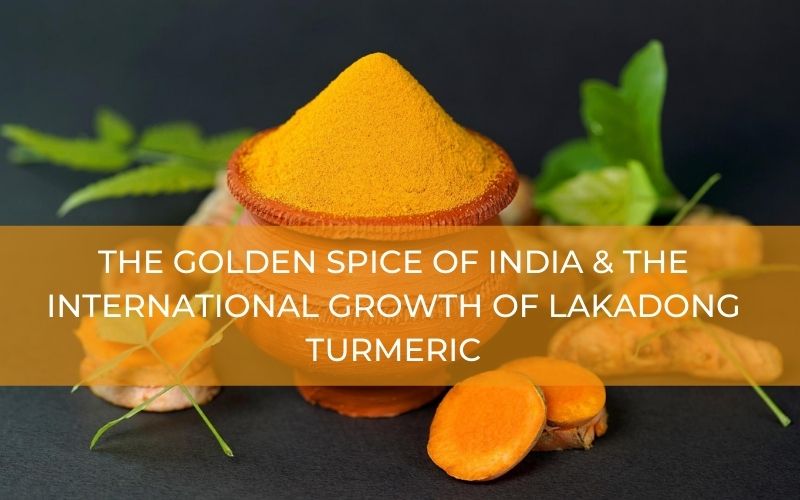
The golden spice of India & the international growth of Lakadong Turmeric
As a nation famous for its spice indulgence, it comes as no surprise that India produces nearly 80% of the world’s turmeric. Interestingly, there is now a spike in the demand for turmeric in the global market as well; not just in the spice category, but also in medicine, cosmetics, and other markets. The use of turmeric in traditional medicine has been practised since ancient times in countries like India, Pakistan, and Bangladesh. The primary reason for it is the core compound found in turmeric, known as curcumin, which has excellent antioxidant and anti-inflammatory properties. In recent times, there has been an increase in scientific studies conducted on curcumin, further backing its claim and fuelling its use in modern medicines and cosmetics, aside from its existing utility as a popular spice in nations like India.
Although India is the largest producer of turmeric in the world, not all regions in the country contribute equally to this gigantic volume of turmeric being churned out annually. As per the 2021 fiscal year, Telangana accounted for the largest share in turmeric production, yielding a volume of no less than 313 thousand metric tonnes, followed by Maharashtra and Karnataka. That being said, the Lakadong variant from Meghalaya, is gaining fast traction in the global market - not because of its production volume, but due to it being counted among the premium variants of turmeric in the world; native to the Lakadong village in Jaintia Hills, Meghalaya. Unlike other turmeric variants, Lakadong consists of a higher concentration of curcumin (approx 7-9%), rendering it one of the most sought-after turmeric variants in both domestic and international markets.
Despite the potent content of curcumin, farmers from Lakadong village have long faced challenges in fetching adequate market exposure for the turmeric variant. Issues such as inadequate storage facilities, weak processing infrastructure, presence of multiple intermediaries, and financial limitations had capped its market potential for decades. However, in 2018, the Government of Meghalaya launched the Mission Lakadong to address these issues and boost the production of the Lakadong turmeric, aiding farmers in increasing their earning potential.
Since then, 25000 MT of quality planting materials has been supplied to farmers by the Government, resulting in a 66% increase in production quantity in the last four years. Meghalaya has also applied for a GI tag for the Lakadong turmeric to protect the crop and enable native farmers to secure their livelihood in the course of accelerated market expansion of the product.
Aside from its domestic market demand, the Lakadong turmeric also has access to European and American markets, where the curcumin market is fast growing. Europe is expected to record over 13% CAGR by 2027 in the curcumin market, driven by the rising demand for curcumin in pharmaceuticals as well as its use in the well-established personal & cosmetics care industry of the region. Meanwhile, North America achieved the highest revenue share of curcumin in 2020, driven by the food & nutritional market; anticipated to maintain similar growth in the coming years.
It is noteworthy that the golden spice (turmeric) has always been quintessential to Indian households - and is perhaps one of the reasons why India is a leading producer of turmeric in the world. It’s not surprising that its traditional utility (practised since ancient times) is now recognized by the western nations and adapted in industries like pharmaceuticals, cosmetics and nutritional beverages. The dynamic utility of turmeric has always been attributed to the wellness segment. In addition, the growth of veganism across industries has further boosted the demand for turmeric - deemed as a ‘magical’ ingredient in the vegan world.
The global market for curcumin was valued at $58.2 million USD in 2020 (and growing), presenting a promising scope for premium variants like the Lakadong turmeric owing to its high curcumin content. It will be interesting to witness the journey of this premium turmeric variant in the long run. At the moment though, active interventions by the state Govt. to further scale the production of Lakadong turmeric and meet international quality standards indicate strategic planning and good timing.
Disclaimer: The opinions expressed in this article are those of the author's. They do not purport to reflect the opinions or views of The Critical Script or its editor.

Newsletter!!!
Subscribe to our weekly Newsletter and stay tuned.

















Related Comments